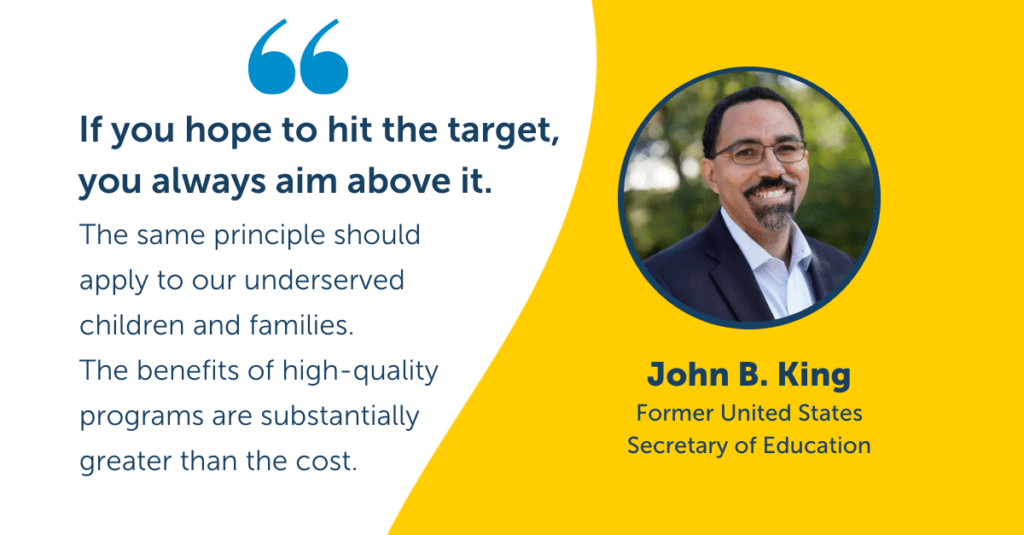Advancing equitable access to the joy and wonder of learning.



Eme leads our strategic development and implementation of work to address the needs of overlooked and under-resourced communities.
When a group of those toddlers sit down for circle time at their daycare, what books will their teacher read? Statistically, the majority of main characters in children’s literature are white. A classroom focused on achieving equity will have curated a bookshelf that is diverse and representative of all students, but it doesn’t happen naturally.
Not only are children of color less likely to see themselves represented in classroom literature, they’re also more likely to have their behavior judged more harshly due to implicit bias. They are less likely to have reliable access to food and housing, and more likely to have developmental concerns missed by teachers and doctors.
When we create spaces where all children have the chance to thrive, we invest in the future.
Through careful data collection, like ZERO TO THREE’s State of Babies Yearbook, it’s clear that equitable access to resources is one of the most important factors in determining the long-term well-being of a child.
Without critical resources, children don’t have the foundation they need to succeed. Those resources include stable, uncrowded housing, affordable medical care, high-quality early childhood programs, and supportive families. Children who live in poverty, particularly children of color, have less reliable access to all of these basic needs.
Data show that children in poverty are less likely to thrive without intervention. By tailoring programs to provide those children with the same early childhood resources as their peers who are not facing poverty, we can work towards closing the equity gap.
Two million babies live in poverty today in America.
While 9% of families with babies overall report they struggle to pay for housing, that number jumps to 24% and 16% for Black and Latine families, respectively. Without stable housing, it is difficult for families to thrive.
Nearly 52% of America’s infants and toddlers are children of color, making equity one of the most pressing issues facing young children today.
Support families. Children who are read to by the adults in their life achieve better educational outcomes, but when families are dragged down by life’s stressors even that simple task can become difficult. A Black mother should be able to find a Black doctor for her child, and every practitioner should be culturally competent. All caregivers should practice antiracist and anti-ableist principles. Ensuring all families have stable housing, nutritious food, and access to medical care, we create a more equitable future for today’s babies.
Get trained. Early childhood professionals can’t just correct equity on their own. The majority of infant and child development resources were created based on information gathered from white English-speaking families with adequate income. Students of color, immigrant children and children with disabilities were not taken into account — leaving those resources outdated and even harmful to the majority of America’s babies. Seek professional development rooted in an equity lens and promote diversity-informed reflective practice among early childhood professionals to provide culturally competent services.
By supporting legislation. Data continually show the devastating effect on babies who aren’t given the same opportunities as their peers. We must push lawmakers to consider equity in all of their decisions that affect families.
Advancing equitable access to the joy and wonder of learning.


|
Join us for the 2025 LEARN Conference in Baltimore this October 8-9!
|